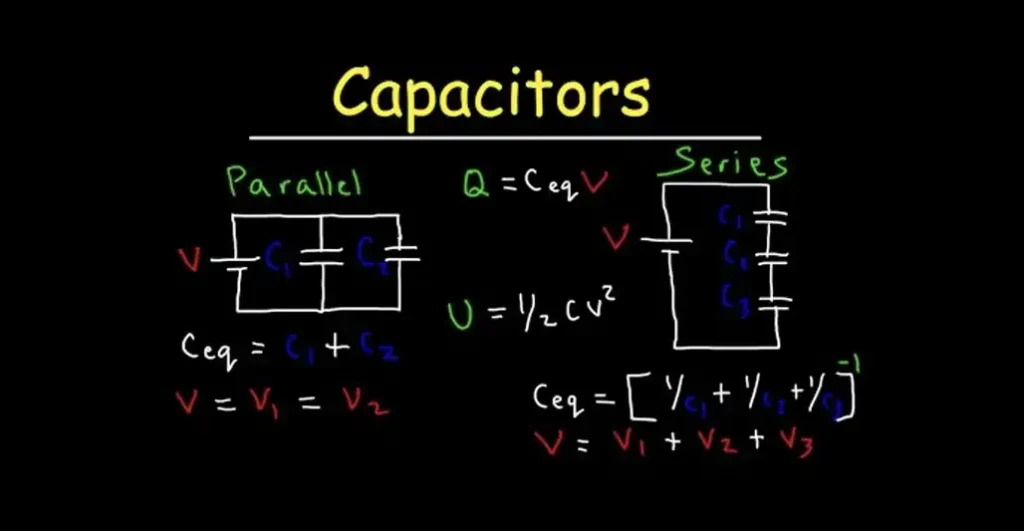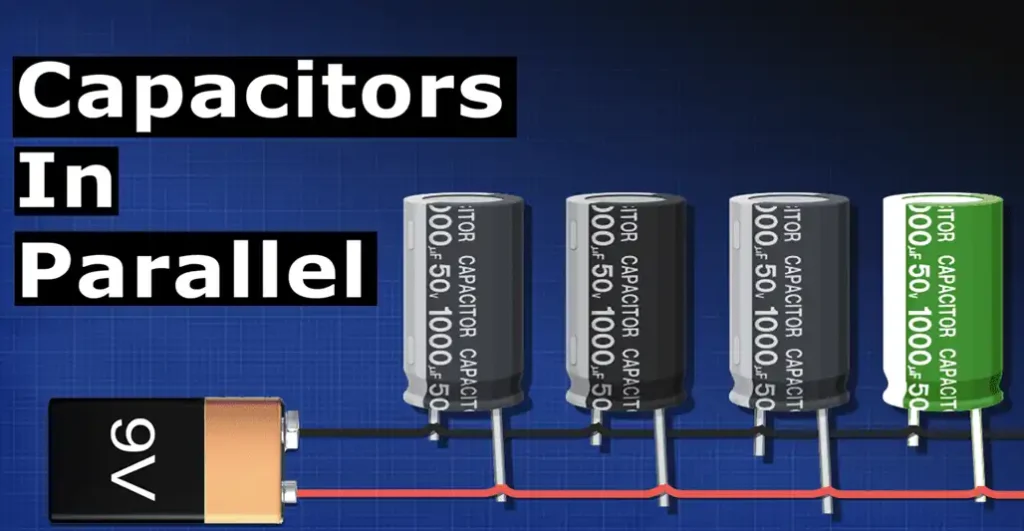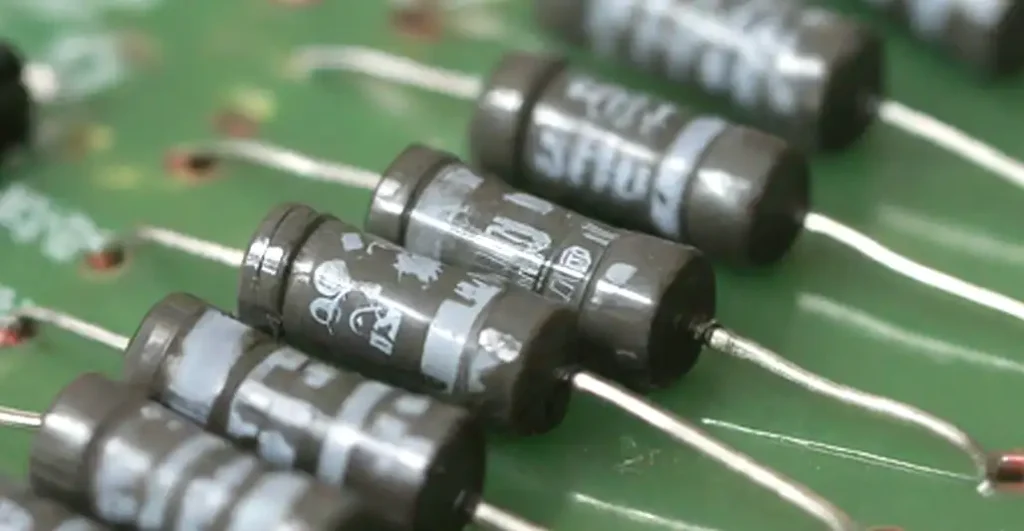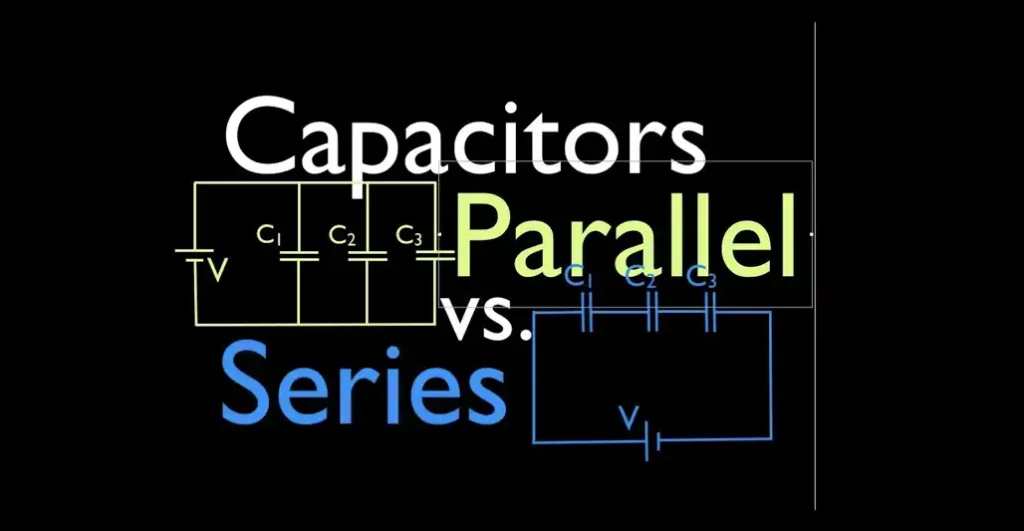In the world of electrical engineering, capacitors are the unsung heroes, quietly storing and releasing energy to keep our circuits running smoothly. But what happens when you bring them together in parallel? Let’s unravel the mysteries and potential of capacitors in parallel.
What Are Capacitors in Parallel?

In the realm of electronics, capacitors are fundamental components that store and release electrical energy. When we talk about capacitors in parallel, we’re referring to a specific configuration where multiple capacitors are connected side by side, with their positive terminals linked together and their negative terminals likewise connected.
When capacitors are arranged in parallel, they share the same voltage across their terminals. However, the total capacitance of the circuit increases. This means that when you connect capacitors in parallel, the combined capacitance is greater than that of any individual capacitor in the arrangement.
In simpler terms, capacitors in parallel act collectively to store more electrical charge than they would individually. This configuration offers several advantages in electronic circuits, including increased energy storage capacity, improved stability, and enhanced power delivery.
Imagine a scenario where you need a large capacitor to store a considerable amount of energy, but you don’t have one on hand. Instead of using a single large capacitor, you can achieve the desired capacitance by connecting several smaller capacitors in parallel. This not only provides the required capacitance but also offers redundancy and better reliability in case one capacitor fails.
Capacitors in parallel are a versatile and efficient way to manage electrical energy in various applications, from simple electronic circuits to complex power systems. They play a crucial role in ensuring smooth operation and optimal performance in countless devices and systems we use every day.
Benefits of Parallel Capacitor Configuration

When it comes to optimizing electrical circuits, utilizing capacitors in parallel offers a range of advantages that can significantly enhance performance and reliability.
Here are some key benefits:
Increased Capacitance:
One of the primary advantages of connecting capacitors in parallel is the collective increase in capacitance. By combining multiple capacitors in this configuration, the total capacitance of the circuit is greater than that of any single capacitor alone. This expanded capacitance allows for more significant energy storage, which can be crucial in applications requiring high power or sustained operation.
Improved Voltage Regulation:
Capacitors in parallel contribute to better voltage regulation within a circuit. They help stabilize voltage levels by absorbing and releasing energy as needed, reducing fluctuations and ensuring a consistent supply of power to connected devices. This enhanced voltage stability is essential for maintaining the integrity and reliability of electronic systems, particularly in sensitive applications where even minor voltage variations can cause issues.
Enhanced Power Delivery:
Parallel capacitor arrangements enable circuits to deliver bursts of power more efficiently. By increasing the total capacitance, these configurations can store and release energy quickly, providing the necessary power for sudden demands or transient loads. This capability is particularly valuable in systems where rapid energy discharge is critical, such as in motor control, audio amplification, or RF transmission.
Redundancy and Reliability:
Another advantage of using capacitors in parallel is the redundancy it offers. If one capacitor in the configuration were to fail, the remaining capacitors would continue to function, albeit with slightly reduced overall capacitance. This built-in redundancy can increase the reliability and longevity of the circuit, as it reduces the likelihood of complete system failure due to a single component malfunction.
Flexibility and Scalability:
Parallel capacitor configurations provide flexibility in designing and scaling electrical circuits to meet specific requirements. Engineers can easily adjust the total capacitance by adding or removing capacitors as needed, allowing for customization and optimization based on the application’s demands. This scalability makes parallel capacitor arrangements suitable for a wide range of applications, from small-scale electronics to large-scale power distribution systems.
The benefits of parallel capacitor configurations encompass increased capacitance, improved voltage regulation, enhanced power delivery, redundancy, reliability, flexibility, and scalability. By leveraging these advantages, engineers and designers can create more efficient, robust, and resilient electrical systems capable of meeting the demands of modern technology.
Applications of Parallel Capacitors

Parallel capacitor configurations find widespread use across various industries and electronic devices, thanks to their versatility and effectiveness in optimizing electrical circuits. Here are some common applications where parallel capacitors play a crucial role:
Electronics Industry: Parallel capacitors are extensively employed in electronic circuits for a multitude of purposes. They are utilized in filtering out noise, decoupling power supplies to prevent voltage fluctuations, and improving signal integrity. In audio systems, parallel capacitors help in smoothing voltage fluctuations and filtering unwanted noise, resulting in clearer sound output. Additionally, they are used in radio frequency (RF) circuits to stabilize oscillations and ensure reliable communication.
Power Distribution Systems: Parallel capacitors play a vital role in power distribution networks, where maintaining stable voltage levels is essential. By connecting capacitors in parallel across the distribution lines, voltage fluctuations caused by varying loads or transient events can be mitigated. This helps in ensuring a consistent and reliable power supply to consumers, minimizing the risk of equipment damage and electrical disturbances.
Renewable Energy Systems: In renewable energy applications such as solar and wind power generation, parallel capacitors are employed to improve system efficiency and stability. Capacitors connected in parallel help in smoothing out fluctuations in energy output, which can result from intermittent renewable energy sources. By storing excess energy during peak production periods and releasing it during low production periods, parallel capacitors contribute to optimizing energy utilization and grid stability.
Motor Control Circuits: Parallel capacitors are commonly used in motor control circuits to improve motor performance and efficiency. By connecting capacitors in parallel with the motor windings, power factor correction can be achieved, leading to reduced energy consumption and improved motor efficiency. This is particularly important in industrial applications where precise control and energy efficiency are critical requirements.
Voltage Regulation in Electronic Devices: Many electronic devices, such as computers, televisions, and mobile phones, utilize parallel capacitors for voltage regulation. By connecting capacitors in parallel with voltage regulators or power management circuits, voltage fluctuations caused by changes in load or input voltage can be minimized. This ensures stable and reliable operation of the electronic device, enhancing user experience and longevity.
Capacitors in Series and Parallel

In the realm of electronics, capacitors are essential components that store and release electrical energy. Understanding how capacitors behave when connected in series or parallel configurations is crucial for designing efficient circuits. Let’s delve into the differences between capacitors in series and parallel:
Capacitors in Series:
When capacitors are connected in series, their positive terminals are connected to each other, and their negative terminals are likewise connected. In this configuration, the total capacitance of the circuit decreases compared to individual capacitors. This is because the effective capacitance in series is inversely proportional to the sum of the reciprocals of the individual capacitances.
In simpler terms, connecting capacitors in series reduces the overall capacitance of the circuit. However, series capacitors share the same charge across their terminals, resulting in an increased total voltage rating. This can be advantageous in applications where higher voltage handling capability is required.
Capacitors in Parallel:
On the other hand, when capacitors are connected in parallel, their positive terminals are connected together, and their negative terminals are similarly connected. In this arrangement, the total capacitance of the circuit increases compared to individual capacitors. This is because the effective capacitance in parallel is the sum of the individual capacitances.
In parallel configuration, capacitors share the same voltage across their terminals, while collectively providing greater energy storage capacity. This makes parallel capacitors suitable for applications where higher capacitance values are needed, such as filtering noise in electronic circuits or stabilizing voltage levels in power distribution systems.
Comparison:
- Capacitance: Capacitors in series have a lower total capacitance compared to individual capacitors, whereas capacitors in parallel have a higher total capacitance.
- Voltage Handling: Series capacitors have a higher total voltage rating than individual capacitors, while parallel capacitors share the same voltage across their terminals.
- Energy Storage: Parallel capacitors collectively provide greater energy storage capacity, making them suitable for applications requiring high capacitance values.
- Circuit Stability: Series capacitors may cause uneven voltage distribution, while parallel capacitors contribute to stable voltage levels and improved circuit performance.
Capacitors in series and parallel configurations offer distinct advantages and are used in different applications based on their characteristics. Understanding the behavior of capacitors in series and parallel is essential for designing efficient and reliable electronic circuits.
Here’s a table comparing capacitors in series and parallel configurations:
| Aspect | Capacitors in Series | Capacitors in Parallel |
|---|---|---|
| Total Capacitance | Decreases compared to individual capacitors | Increases compared to individual capacitors |
| Voltage Handling | Total voltage rating is higher than individual capacitors | Same voltage across all capacitors |
| Energy Storage | Lower total energy storage capacity | Higher total energy storage capacity |
| Circuit Stability | May cause uneven voltage distribution | Contributes to stable voltage levels and improved performance |
This table provides a concise comparison of the key aspects of capacitors in series vs parallel configurations, helping to understand their differences and applications of series and parallel circuits capacitors better.
FAQs
How do capacitors in parallel differ from capacitors in series?
Capacitors in parallel share the same voltage across their terminals, while capacitors in series share the same charge.
Can I mix capacitors with different capacitance values in parallel?
It’s not recommended, as mismatched capacitance values can lead to uneven energy distribution and potential circuit instability.
What are the advantages of using capacitors in parallel in audio systems?
Parallel capacitors can improve audio system performance by filtering out noise and smoothing voltage fluctuations, resulting in clearer sound output.
How do I calculate the total capacitance of capacitors in parallel?
To find the total capacitance, simply add the capacitance values of all capacitors connected in parallel.
Are there any safety concerns when using capacitors in parallel?
While capacitors in parallel themselves are not inherently dangerous, proper safety measures should be followed, such as ensuring correct polarity and voltage ratings.
Can I connect capacitors in parallel in high-voltage applications?
Yes, but it’s crucial to choose capacitors rated for the specific voltage levels of the application to prevent damage or failure.
Conclusion
Capacitors in parallel offer a multitude of benefits, from increased capacitance to enhanced power delivery and voltage regulation. By understanding their principles and applications, engineers and enthusiasts can leverage their potential to optimize electrical systems for various purposes.




















